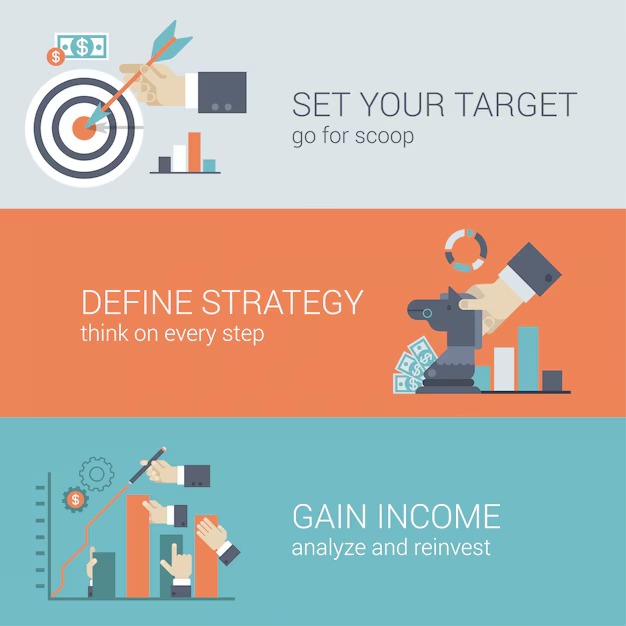How to Validate a Startup Idea Successfully
Engage potential customers early. Conduct interviews to uncover their pain points. Surveys can effectively gauge interest in your proposition and reveal if it genuinely meets market needs.
Examine competitors rigorously. Analyze their strengths and weaknesses, and clarify how your offering stands apart. This comparison can highlight gaps that your product can fill.
Prototyping is pivotal. Create a simple version of your product or service to share with a focus group. Their feedback will provide insights into necessary adjustments and improvements.
Implement a minimum viable version in the market. Collect data on customer interactions and behaviors. Real-world usage reveals much more than hypothetical scenarios.
Remain adaptable and ready to iterate based on feedback. Continuous refinement can greatly enhance the likelihood of acceptance and success in a competitive environment.
Identify Your Target Market and Audience
Define the specific demographics, psychographics, and behavior patterns of potential customers. Use market research to gather data on age, gender, income, education, interests, and purchasing habits. Surveys and interviews can provide valuable insights. For example, focus groups can uncover emotional triggers influencing purchase decisions.
Segment the Market
Segmentation allows for precise targeting. Divide the market into distinct groups based on characteristics such as location, lifestyle, and preferences. Apply tools like customer personas to create detailed profiles that represent segments. This helps tailor marketing strategies to resonate with different audience groups.
Analyze Competition
Study competitors to understand their target audience and market positioning. Identify gaps in the market where your product or service can provide unique value. Use tools like SWOT analysis to assess strengths, weaknesses, opportunities, and threats in relation to your competitors.
Conduct Surveys and Gather Feedback
Design targeted surveys to extract specific insights related to customer needs and preferences. Utilize tools like Google Forms or SurveyMonkey for this purpose.
Keep surveys concise and focused. A range of 5-10 questions is optimal. Use a mix of multiple-choice and open-ended questions to gather both quantitative and qualitative data.
Ensure to reach a diverse audience; target different demographics to gain a comprehensive view. Utilize social media platforms and relevant online forums to distribute your surveys effectively.
| Question Type | Description |
|---|---|
| Multiple Choice | Allows respondents to select their preferred option among several choices. |
| Rating Scale | Enables respondents to rate their preferences on a numerical scale, providing insight into intensity of feelings. |
| Open-Ended | Gives respondents the opportunity to express thoughts in their own words, revealing deeper insights. |
After collecting responses, analyze the data to identify patterns and recurring themes. Ensure to focus on critical feedback; this helps in making necessary adjustments before launching.
In addition to surveys, engage with potential customers through interviews or focus groups to discuss their thoughts in a more in-depth manner. This personal interaction can uncover insights that surveys may miss.
Lastly, follow up with participants after analyzing feedback to keep them engaged and informed. This not only builds rapport but can also turn them into advocates for your venture.
Analyze Competitors and Market Trends
Conduct in-depth competitor research to understand their strengths, weaknesses, market positioning, and growth strategies. Utilize tools like SEMrush or SimilarWeb for insights into website traffic, audience demographics, and keyword strategies.
Identify top competitors in your niche and create a SWOT analysis for each, focusing on:
- Strengths: Unique value propositions and competitive advantages.
- Weaknesses: Gaps in offerings and customer service issues.
- Opportunities: Emerging market demands that are untapped.
- Threats: Potential new entrants and economic shifts impacting the industry.
Stay updated with market trends by regularly reviewing industry reports, consumer behavior studies, and relevant publications. Aim for at least one major market analysis every quarter to capture shifts and forecast changes.
Utilize social media listening tools to track competitor mentions, customer feedback, and market sentiment. Platforms like Hootsuite and Brandwatch can provide real-time insights into public perception and emerging trends.
Engage directly with target audiences through surveys and feedback forms to comprehend their preferences and pain points. Incorporate this data into identifying better positioning strategies in the competitive landscape.
Establish benchmarks for performance metrics by comparing them with competitors, particularly focusing on:
- Pricing strategies
- Marketing campaigns
- Customer retention rates
Finally, constantly iterate based on collected data. Conduct monthly reviews of competitor activities and market shifts to adapt strategies promptly. This proactive approach may enhance competitive positioning and inform future decision-making for business growth in 2025.
Create a Minimum Viable Product (MVP)
Focus on building a functional prototype that showcases core features. Prioritize the elements that define the primary purpose and address the most pressing problems your target audience faces.
Identify Key Features
Conduct user interviews to uncover needs and preferences. Select a few critical functions that will clearly convey the product’s value. Avoid adding non-essential features that could dilute the message and extend development time.
Leverage Rapid Prototyping
Utilize tools like wireframes and mockups to visualize the MVP before coding. This allows for quick adjustments based on user feedback. Test designs rigorously to identify potential user experience issues early.
Launch the MVP to a small group of users in early 2025. Gather real-world feedback and analyze usage patterns to iterate on the product. Refine the offering based on this input to better align with user expectations.
Ensure the MVP is scalable. Build with future growth in mind to accommodate additional features based on insights gained from initial users. A well-structured MVP lays the groundwork for subsequent product iterations and enhancements.
Test Pricing Strategies with Potential Customers
Engage directly with prospective users to gather opinions on pricing models. Conduct surveys or interviews to determine their willingness to pay for different service levels or product features. Present three or four pricing options, ranging from basic to premium, to gauge preferences and reactions.
Utilize A/B Testing
Implement A/B testing with a sample audience. Create variations of your pricing structure and launch them simultaneously. Analyze the conversion rates and feedback from each group to identify which pricing resonates better with customers. Make adjustments based on the data collected to optimize your offerings.
Monitor Competitor Pricing
Research how similar products are priced in the market. Compare features, benefits, and customer perceptions related to those prices. Understanding competitor strategies will provide insight into how to position your pricing to attract customers while maintaining profitability.
Refine Your Idea Based on Validation Results
Analyze quantitative and qualitative data collected from potential customers. Identify patterns in feedback to understand pain points and preferences. Gather insights on which features are most desired and which aspects may hinder interest. Prioritize modifications based on this information.
Adjust Product Features
Modify offerings to better align with user expectations. This could mean enhancing certain features, simplifying the user interface, or even removing elements that are underwhelming. Testing various prototypes can also help refine these aspects based on user interactions throughout 2025.
Reassess Target Demographics
Evaluate the initial target audience. If data indicates a different group shows more interest or a greater need, consider shifting focus. Tailoring marketing strategies and communication to resonate with this new demographic can significantly improve outreach and acceptance.
Q&A: How to validate a startup idea
How Can an entrepreneur quickly validate your idea before investing heavily?
Start by drafting a clear business idea statement, mapping two or three business models, and launching a simple landing page with a single call-to-action. Use this to validate your startup by collecting emails, interest signals, and small preorders to confirm paying customers exist and the viability of your business is real.
What Are the most reliable steps to validate your startup idea with real users?
Define the target customer, write a concise value proposition, and run ads to a landing page that offers a specific promise. Track sign-ups and intent to pay to validate a business idea, then interview respondents to test your idea with problem-solution fit before moving deeper into product development.
How Do you use a lean startup methodology for idea validation without building the full product?
Create a concierge MVP or demo video instead of building the product, and use a structured validation process to test your assumptions. If people agree to pay for your product after the walkthrough, you validate your business idea and gain confidence to build a product that solves a problem.
Which Validation framework should a startup founder choose to move from initial idea to market validation?
Adopt a simple validation framework: problem interviews → solution sketch → landing page test → offer test with deposits. This sequence helps you validate your startup idea, confirm market validation with real customer signals, and decide if your idea works before committing to higher startup costs.
How Can a landing page reveal whether your product idea has paying customers?
Design a focused landing page with benefits, pricing, and a checkout or reservation button, then direct traffic from the target customer segment. If a meaningful share click “buy,” you validate your startup and confirm people will pay for your product, proving a viable business path.
What Metrics show that you can validate your startup beyond vanity numbers?
Prioritize deposit rate, conversion to paid trials, and actual revenue over clicks or likes to validate your startup idea. These metrics indicate that customers will pay for your product and that the viability of your business is improving with each iteration of your validation process.
How Should you test your product concept if you’re starting a business with limited funds?
Use no-code to build something lightweight, run small experiments to test your product with a handful of target customers, and measure willingness to pay. This lean startup approach lets you validate a business idea quickly and avoid building the product at full scope too early.
When Is it time to create a business plan during startup idea validation?
Draft a concise business plan after the first signs of market validation, using data from interviews, landing page tests, and early paying customers. The plan should connect business models to realistic goals so you can launch a startup with confidence and align funding your startup with evidence.
What Are practical ways to test your idea for a service idea or new business ideas effectively?
Offer a limited pilot to real customer segments, price it transparently, and use contracts or invoices to confirm demand. This way to test lets you validate your startup idea with commitments, refine your validation framework, and ensure your product to market path is grounded in evidence.
How Do you turn a clear idea into a sustainable business model during the startup journey?
Combine insights from market research with lean experiments to validate your business idea, then select business models that match unit economics proven by early sales. Iterating with innovative ideas and talking to your potential customers ensures a sustainable business model that supports building your business in 2025.

